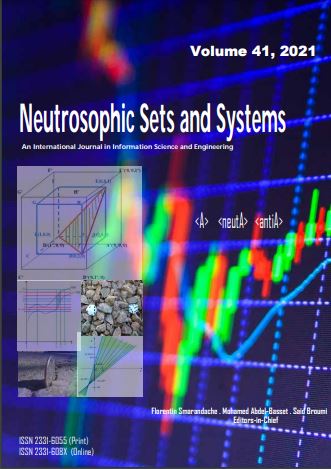Interval Valued Intuitionistic Neutrosophic Soft Set and its Application on Diagnosing Psychiatric Disorder by Using Similarity Measure
Abstract
 The primary focus of this manuscript comprises three sections. Initially, we discuss the notion of an interval-valued intuitionistic neutrosophic soft set. We impose an intuitionistic condition between the membership grades of truth and falsity such that their supremum sum does not exceed unity. Similarly, for indeterminacy, the membership grade is in interval from the closed interval [0, 1]. Hence in this case, the supremum sum of membership grades of truth, indeterminacy, and falsity does not exceed two. We present the notion of necessity, possibility, concentration, and dilation operators and establish some of its properties. Second, we define the similarity measure between two interval-valued intuitionistic neutrosophic soft sets. Also, we discuss its superiority by comparing it with existing methods. Finally, we develop an algorithm and illustrate with an example of diagnosing psychiatric disorders. Even though the similarity measure plays a vital role in diagnosing psychiatric disorders, existing methods deal hardly in diagnosing psychiatric disorders. By nature, most of the psychiatric disorder behaviors are ambivalence. Hence, it is vital to capture the membership grades by using interval-valued intuitionistic neutrosophic soft set. In this manuscript, we provide a solution in diagnosing psychiatric disorders, and the proposed similarity measure is valuable and compatible in diagnosing psychiatric disorders in any neutrosophic environment.
Downloads
Downloads
Published
Issue
Section
License
Copyright (c) 2021 Neutrosophic Sets and Systems

This work is licensed under a Creative Commons Attribution-NonCommercial-ShareAlike 4.0 International License.




